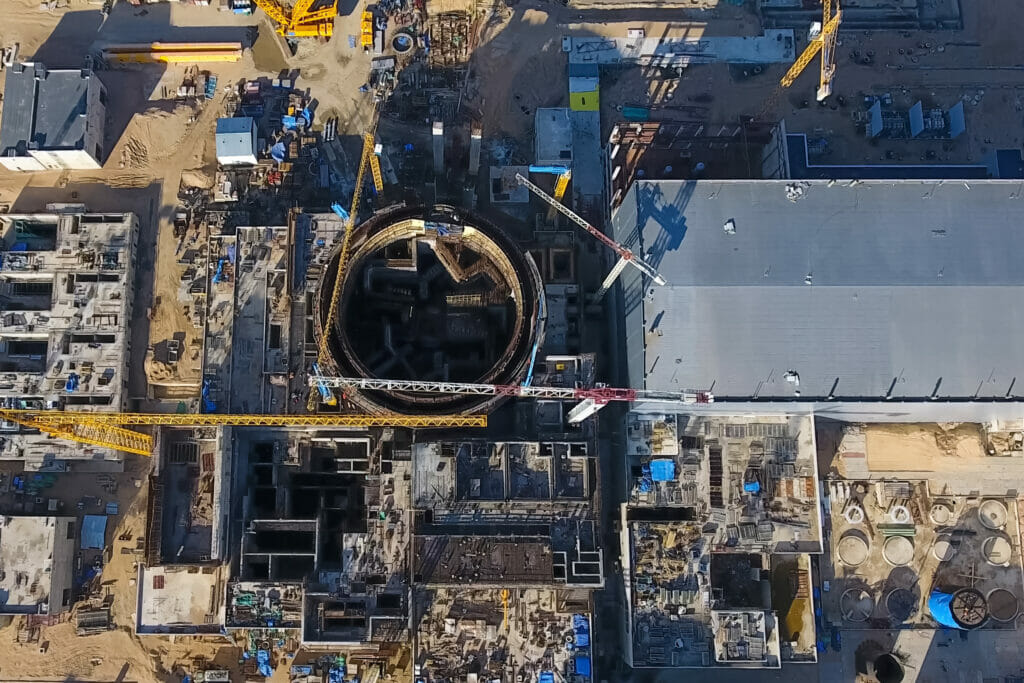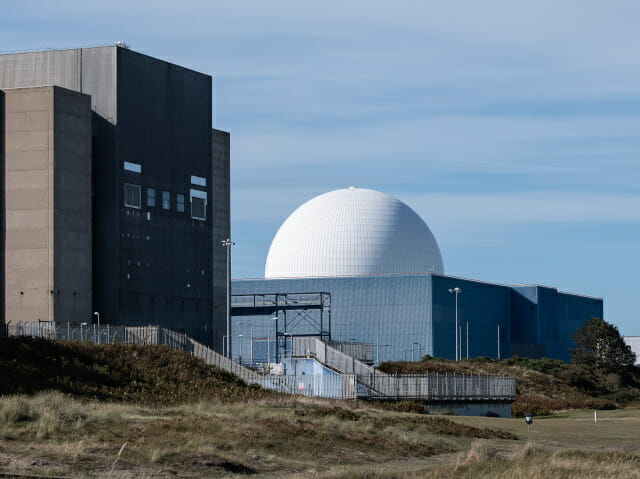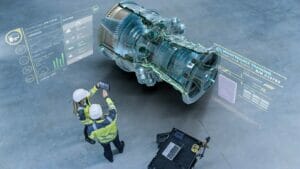On 2 December 2021, Clara Coombes attended the Nuclear Institute/Nuclear Industry Association annual dinner and, together with her co-authors, was awarded the 2020 Pinkerton Prize for their article ‘Expanding Nuclear’s Contribution to Climate Change with Small Modular Reactors (SMRs)’ (Nuclear Futures, Vol. 16, No. 5).The Pinkerton Prize is awarded annually by the Nuclear Institute for the article that is judged to be the best technical paper published in Nuclear Futures.
The prize-winning article showed how small modular nuclear reactors (SMRs) can be more economic than large nuclear reactors, based on a wider body of research on SMR construction, economics, and supply chain logistics, undertaken by Clara and her co‑authors at the University of Cambridge.
THE RESEARCH: SMR CONSTRUCTION & ECONOMICS
Nuclear reactors are used to initiate and control either a fission nuclear reaction (splitting atoms) or fusion reaction (combining atoms).There are many different nuclear reactor designs, but they all provide the same basic function: nuclear reactions generate large amounts of heat that can be converted into useable power. At present, nuclear power is most commonly used for electricity generation and marine propulsion; however, possible other applications include combined heat & power plants, zero-carbon hydrogen production, and even powering space exploration.
Clara’s PhD thesis, Modular Manufacture and Construction of Small Nuclear Power Generation Systems (2019), investigated whether nuclear reactors could be built from factory-produced modules, thereby shifting a portion of costly and time-consuming site construction work to a lower risk, higher productivity, off-site environment. Her research assessed the practical factors constraining the modularisation of nuclear power plants (e.g. equipment size and module transportability).She applied these constraints to determine how big a proportion of an SMR might be constructed off-site and estimated both the build time compression and cost savings that might be achieved as a result.
Clara’s research showed that as much as 80-90% of an SMR could be modularised and constructed in a factory. This level of modularisation would allow the SMR to be built in 3-4 years (a schedule reduction of up to 40%) and could lower construction costs by up to 50% relative to current, conventional construction methods.

SMR DEVELOPMENTS IN INDUSTRY
Rolls-Royce is leading a UK-based consortium to develop the UK’s first SMR design. Rolls-Royce recently announced that they have secured enough funding to take their SMR design through to the UK’s Generic Design Assessment (GDA) stage. This is the critical next step in the regulatory and licensing process for nuclear reactors, and represents a major milestone in achieving Rolls-Royce’s overarching goal of bringing SMR-generated power to the national grid by the 2030’s.
Although the nuclear technology used in the Rolls-Royce SMR is not new, the commitment to modularisation and factory-build is a significant shift for the nuclear industry. The Rolls-Royce SMR produces 470 MW of power and is designed to have as much as 90% of its content fabricated in controlled factory conditions. This is expected to offer significant cost and schedule savings: the modular Rolls-Royce SMR has a 4-year total construction and commissioning period, with only 500 days allocated for the on-site assembly of modules.
THE GAME-CHANGING FACTOR?
Nuclear power may well play a critical role in the UK’s commitment to reach net zero carbon emissions by 2050 and modularisation may be the game-changing factor the nuclear industry needs. Using factories to build SMR modules can make nuclear power cheaper and more competitive, ultimately enabling faster addition of nuclear generating capacity to the UK’s supply of low-carbon energy.
Clara Lloyd is an Associate based in Hawkins’ Cambridge Office. She holds a PhD in Engineering from Cambridge University, as well as undergraduate and master’s degrees in Chemical Engineering from the University of Toronto and Cambridge University, respectively.





